Maker Ed is excited to welcome back Albemarle County Public Schools as a Maker Corps Host Site in 2015. For the third year of Maker Corps, Maker Ed will collaborate with more than forty organizations to host Maker Corps Members throughout the summer to bring maker activities and approaches to the communities that they serve.
Below is a guest post on schools as a source of disruptive innovation by Dr. Pamela R. Moran, Superintendent of Schools at Albemarle County Public Schools. Click here to learn more about becoming a Maker Corps Member at Albemarle County Public Schools.
Disruptive Innovation in Schools From Inside Out – Not Outside In
I’ve been thinking about disruptive innovation in schools. Disruptive innovation has evolved into a buzz phrase with superficial interpretations that can confuse understanding. First, its history. In 1997, Clayton Christensen coined the term to describe the concept’s application in the business sector and defined it in The Innovator’s Dilemma.
Disruptive Innovation: The theory of disruptive innovation describes a process by which a product or service transforms an existing market by introducing simplicity, convenience, accessibility, and affordability. – See more at: http://www.christenseninstitute.org/key-concepts/#sthash.fVqlOlnb.dpuf” (Christensen Institute)
Here’s a few examples. The personal computer replaces mainframes. The cell phone replaces land lines. Online sellers replace department stores. And, a question.
Will maker work replace factory school work?
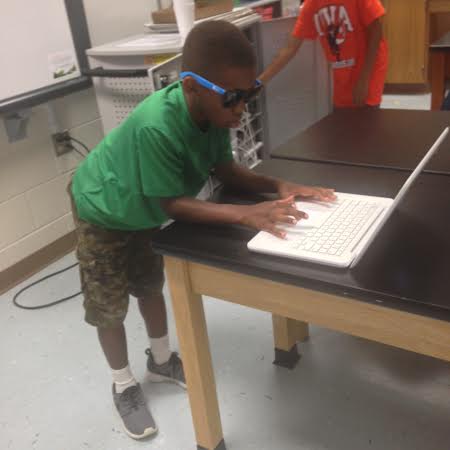
In Disrupting Class, Christensen originally hypothesized the rise of online learning as being the big outside disruptor inside K-16 education, believing the exponential increase in virtual coursework would lead to replacement of a significant percentage of face-to-face classes over the next decade. Today, Christensen identifies blended learning models – a combination of virtual with bricks and mortar opportunities – as a key disruptive innovation occurring in schools.
However, I believe there’s more astir within the nature of disruptive innovation in education than simply the blending of technologies and the Internet with school and home to “personalize learning.” I see signs of a different form of disruptive innovation in schools, one grounded not in online coursework but rather in young people working together face-to-face as they search, connect, communicate and make to learn. My perspective is informed by teens who often share their value for the social nature of school communities as they learn with each other inside and outside school walls. I also hear it in their voices as they engage in the creativity processes inherent in making to learn and learning to make. How is this perspective being translated into schools?
The Learning Commons as Disruptive Innovation
Recent dynamic changes in how some libraries are used has shifted them to what now is labeled as the concept of the learning commons.
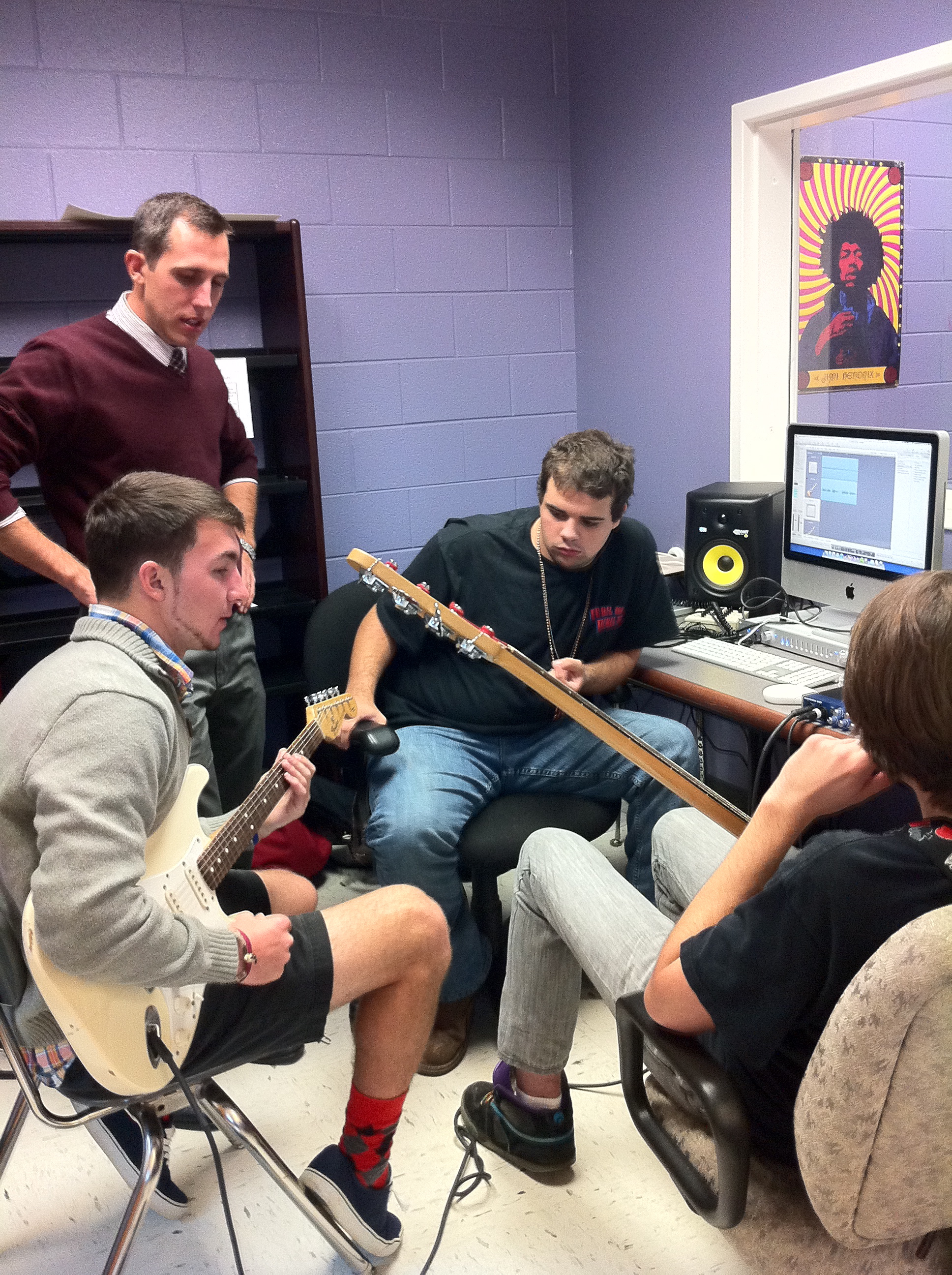
For example, high school librarians in the district where I work as well as in some other districts across the country are providing students with opportunities to do much more than sit silently, research or read virtually or otherwise. Progressive librarians are turning space into areas where students can search, connect, communicate and make throughout the school day and before and after school. A disruptive innovation result? Kids who never stepped into a library unless required to do so now choose to spend hours there.
Librarians who disrupt the concept of library have become hackers alongside students. They encourage slam poets, music makers, videographers, app developers, gamers and design thinkers to share space alongside more traditional readers and researchers. As a result, kids are finding each other and forming social communities for formal and informal learning inside the school’s walls.
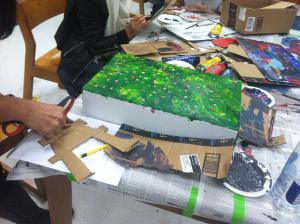
What else happens when librarians hack library space? Circulation goes up. Students who never would have visited the library voluntarily do so. Teachers value the library as an active and thriving space for their classes to produce, develop and curate as users, not just consume content. Libraries pick up a “market share” of teachers and students who never before saw themselves as library users by choice.
Libraries in this change process have become far more than a source of static, pre-curated materials used by people in permanent “silent” mode. Instead, these libraries represent an Agora, a marketplace of ideas, creativity, discovery, and interaction. As libraries become a gathering space in schools, cultural changes reflect students’ value for formal and informal learning opportunities – only some of which may represent Christensen’s blended learning disruption. Instead, it’s the emerging communal nature of the library inside the school that’s disrupting learning – the evolution of shared and open spaces where young people come together as agents of collaborative learning.
The Agora (/ˈæɡərə/; Ancient Greek: Ἀγορά Agorá) was a central spot in ancient Greek city-states. The literal meaning of the word is “gathering place” or “assembly”. The agora was the center of athletic, artistic, spiritual and political life of the city. The Ancient Agora of Athens was the best-known example.” (Wikipedia)
https://www.youtube.com/watch?v=L18aec5LSMY
Makers Inside Schools Disruptively Innovate

Beyond libraries, what other ways are schools becoming sources of disruptive innovation? Teachers and librarians who see themselves as creatives, designers, inventors, and even entrepreneurs are building start-up cultures in their classrooms grounded in the “make to learn” movement.
In classes with a maker mindset as Dale Dougherty of Make labels it, teachers and students redefine roles of teachers and learners as interchangeable. Students actively steer their own learning as they work on projects, researching information they need in their “make to learn and learn to make” work using tools such as YouTube while seeking expertise found in interactive social media sites such as Twitter or Instagram. Students in maker-based learning environments begin to see learning as seamless, collaborative, and extended – not defined by other’s goals for them but by their own drive to learn.
Freedom to Learn from the Inside Out
Educators who disruptively innovate the use of pedagogy, tools, and curricula through a maker-empowerment focus (Harvard Project Zero, Agency by Design) engage young people differently, reaching students who haven’t seen themselves as successful learners in traditional settings. These students may have silently resisted or even actively sabotaged school learning opportunities, regardless of their capability or background. From the maker-empowerment studies, students who experience passion, challenge and a chance to pursue their own learning interests are less likely to “drop out” emotionally and intellectually or to physically check out of school. Instead, “maker-empowered” learners build knowledge, competency and confidence through the relational support of teachers and peers. They come to see their potential to learn far more in school than educational standards prescribe.
The maker movement as disruptive innovation transcends the “personalized” options touted in blended learning or specialized environments such as charter schools. I’ve discovered a surprising number of makers in all kinds of spaces inside public schools once built to factory model specifications for the use of time, schedules, facilities, and learning resources. I’ve noticed middle schoolers taking apart a bike to figure out the physics of its design principles and observed teens repairing a compressor in a re-purposed audio-visual storeroom and using the library as a resource for finding the science, math, and technical knowledge and skills they need.
These are signals that mainstream education is being disrupted by the spread of maker ed, a simultaneous challenge from inside school walls to both the 20th century factory school and the 21st century virtual learning model. Maker education is a simple, accessible and affordable way to change the way our young people experience learning – and it’s far more compatible with how humans learn than the dominant teaching wall, desk in rows, bell schedule driven schoolwork of the 20th century.
Isn’t it about time?

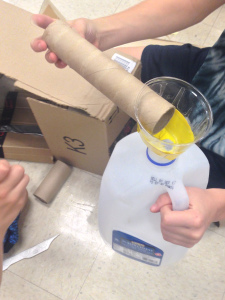
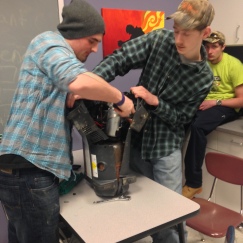
Leave a Reply